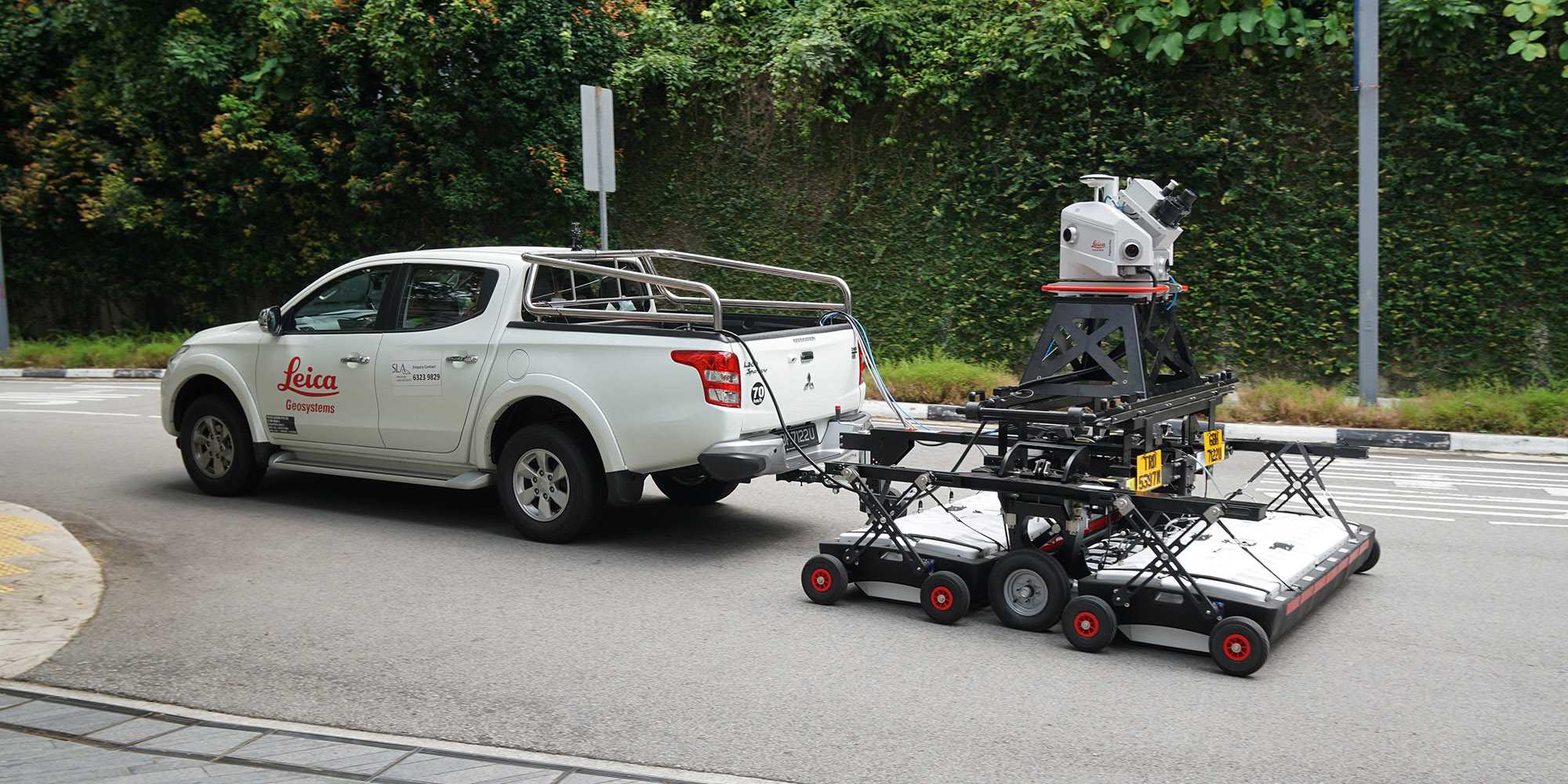
Looking underground, looking to the future
The Digital Underground project finished its 3rd phase in 2023. Here's a look at the project's milestones, and what might come in the future.
In Brief:
- From 2017 to 2023, the Digital Underground project developed a digital twin of all subsurface utilities in Singapore, with the Singapore Land Authority (SLA).
- Apart from creating the tool, Digital Underground also supported stakeholder interactions between government and private sector stakeholders, and contributed to the development of a more sustainable, resilient, and smarter nation.
- The now-completed project went through three phases, from formulating roadmap to testing a data workflow.

What lies beneath
734 square kilometres – this is Singapore’s current total land area, smaller than the land covered by cities like London, Paris and New York City.
In a bid to overcome this problem of land scarcity, Singapore’s city planners have begun to explore tapping underground spaces to optimise land use.
Since 2017, the Digital Underground project has been supporting this effort by aiming to develop a reliable digital twin of all subsurface utilities in Singapore. Hosted by the Singapore-ETH Centre, in collaboration with the Singapore Land Authority (SLA), the project’s work seeks to create a new perspective of viewing Singapore’s underground space, for better administration of the underground.
The challenges of the underground as the next frontier
Unlike Singapore’s attempts to meet its land needs through land reclamation from the sea, developing the city’s underground is not as straightforward as exploring unoccupied, virgin space. In Singapore, the underground contains train lines, utility networks, pedestrian nodes, and resource storage units.
In this increasingly congested space, developing further underground requires an understanding of where infrastructure, utilities and data networks are located.
Another challenge facing city planners was the absence of a centralised map of the underground and outdated, unreliable information. As a result, any serious underground development required the boring of ‘trial holes’ to confirm if what is there, is really there.
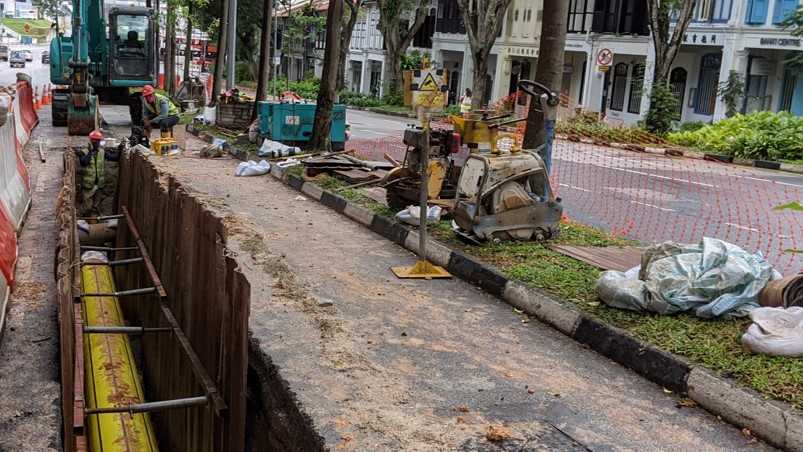
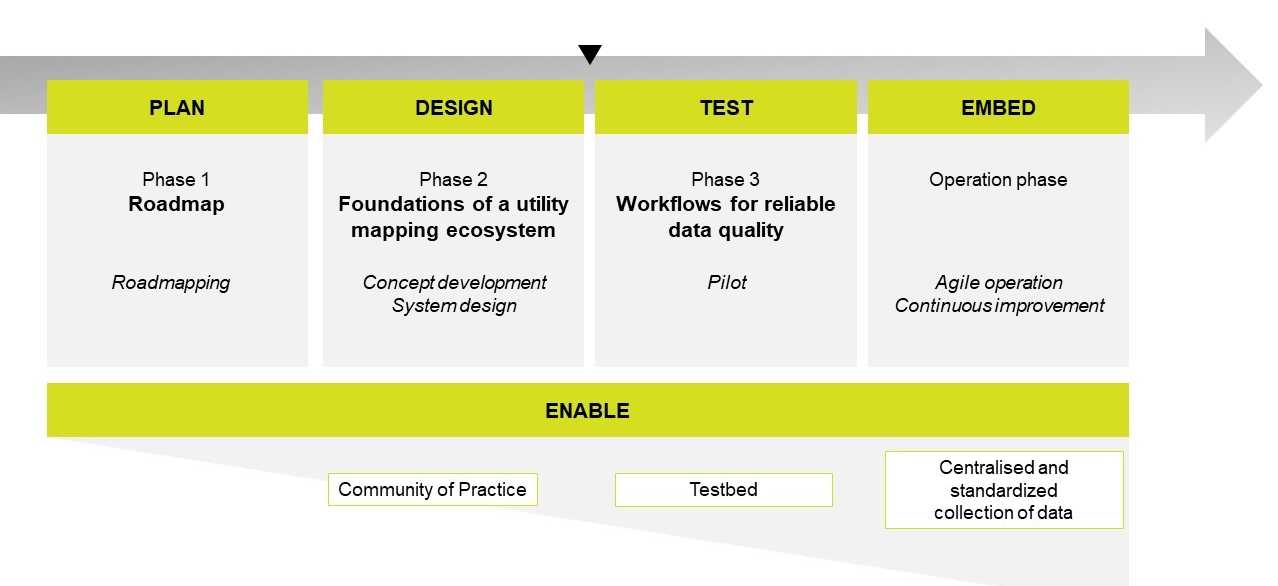
Seeing the underground in a new way
With Singapore’s smart nation push proposing extensive use of underground space for multi-modal transport systems to automated waste collection networks, the need to address these challenges was all the more important.
Enter Digital Underground.
The idea behind the project was “to help the Singapore government establish an accurate and reliable 3D map, a digital twin, of all existing underground utilities,” according to Rob van Son, Digital Underground’s project manager.
Thus, the Digital Underground project’s unique proposition would be two-fold:
- Developing a reliable, digital and dynamic map (or digital twin) of all of Singapore’s subsurface utilities
- Building an integrated approach for sustaining a utility mapping ecosystem to support this digital twin
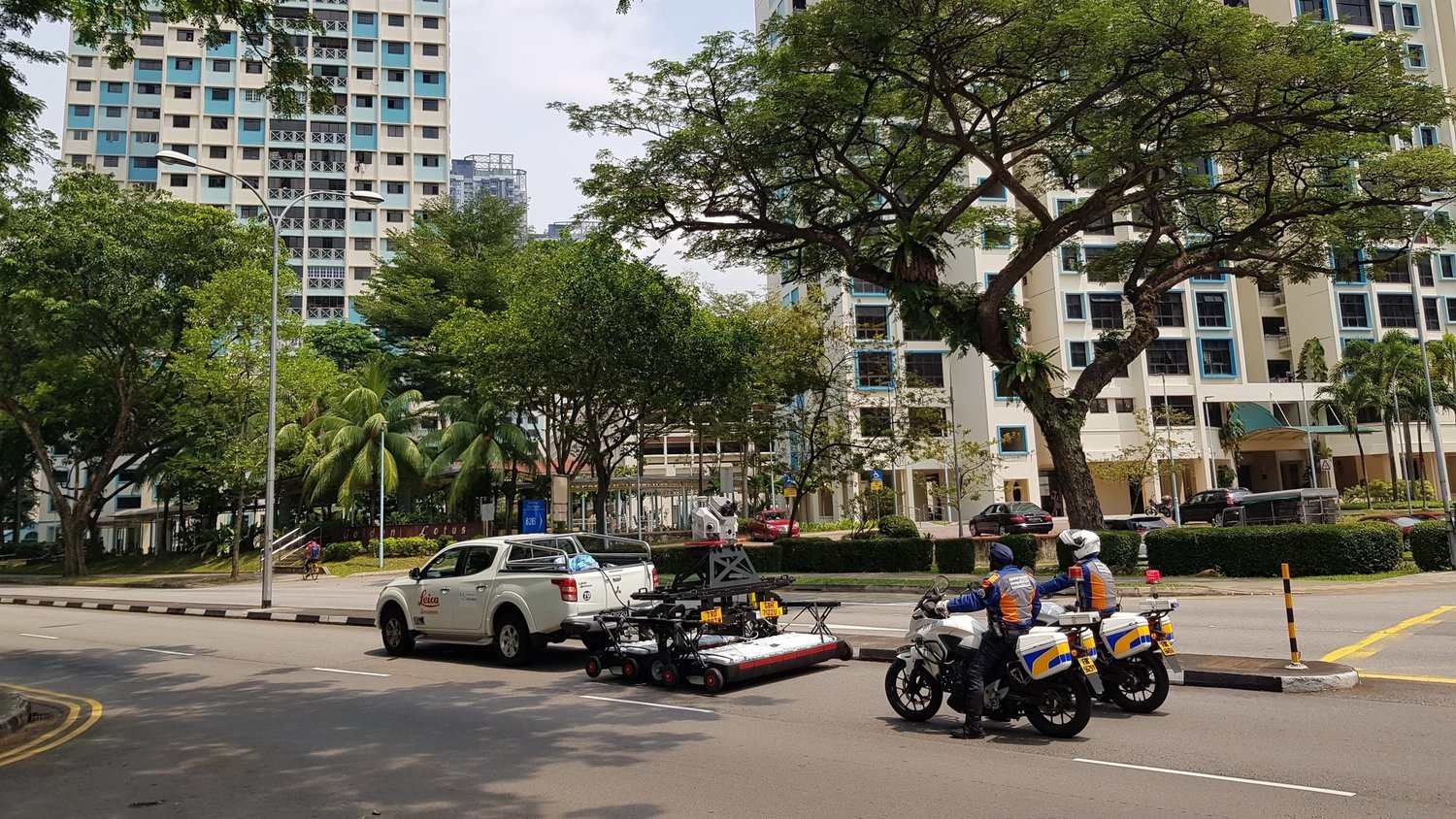
Foundations, roadmaps, communities and workflows
Since 2017, the project has embarked on three phases to meet its goal of achieving an operable digital twin for subsurface utilities.
In Phase 1, the project examined available maps and existing underground mapping techniques. Just like a literature review to understand a subject, this phase built on already-available knowledge. It concluded with the delivery of a roadmap for an integrated ecosystem to digitally map the underground. The way forward was clear: a reliable overview of the underground required an interconnected framework of effective policies and processes, capable people, and appropriate digital technology.
Phase 2 set out to build this roadmap and create this ecosystem. To ensure the utility mapping ecosystem they proposed would be sustainable, the project team set about making sure that the necessary people, processes, and technology would need to be in place to continuously provide reliable 3D utility map data to both government and private sectors.
This meant creating proposals for underground data governance, specifying standards for mapping and capturing data, and starting a data management platform to ensure quality control.
Consequently, in Phase 2, the project also established a community of practice, called the Digital Underground Connect (DU Connect). This is a professional community that serves as a space to learn, share knowledge and improve on reliable utility mapping practices. As DU Connect involves both government and private sector stakeholders, it serves as the ‘soft’, socio-educational infrastructure to the project’s aim to develop its digital twin.
In the recently-concluded Phase 3, the project supported the SLA by developing, testing and improving on a workflow that encompassed data capture, submission and quality control. Together with end users, the project explored new solutions to reconcile legacy underground data, and enable effective use of data with varying quality levels. All these efforts will ensure the digital twin would be supported by accurate, timely data.
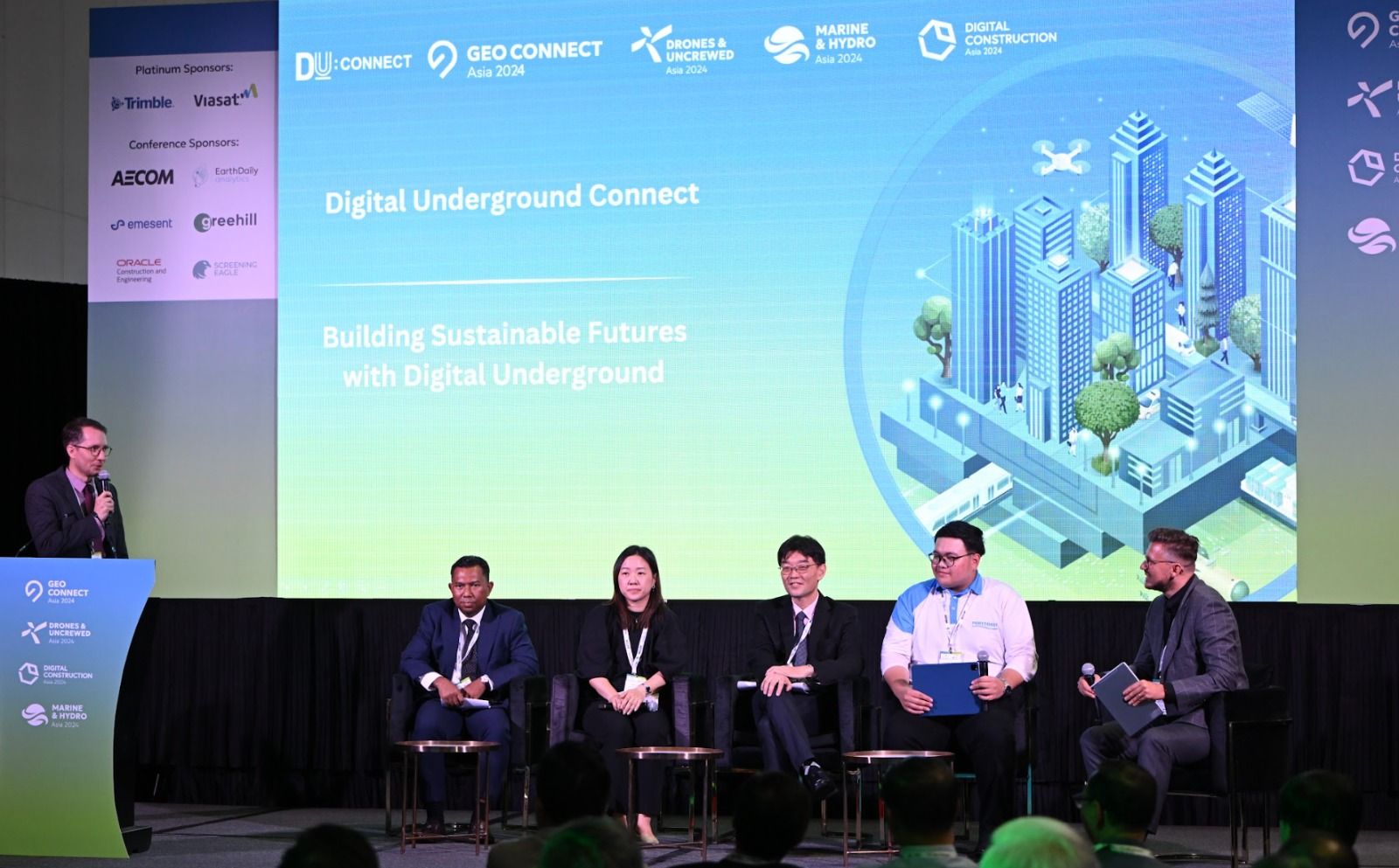
“SEC brings a wealth of diverse expertise from around the globe, which significantly enhances the project's breadth and reach. This collaboration with SEC enables SLA to foster closer ties with industry and international partners, deepens geospatial capabilities and contributes to the development of a more sustainable, resilient, and smarter nation.”Dr Victor Khoo, Director for Survey and Geomatics Division, Singapore Land Authority
A path towards a better overview of subsurface utilities
As the Digital Underground project reflects upon seven years of hard work across three phases, this article also looks at some of the project’s notable milestones.
First, as part of fostering a community of practice, the project and the SLA have created a collaborative strategy to share data. Encompassing government agencies, utility companies, contractors, surveyors, and solution providers, both the project and its government partner the SLA are united in their view that DU Connect provides unique, on-the-ground insight into the experience of using, operating and evaluating data required for the digital twin.
“DU connect has been useful to bring forward stakeholders from the industry, authorities, surveyors and contractors to understand the advancement in technology,” said Shane Shi, Managing Director, HSC Pipeline. “This provides a platform for everyone to be aware of the new technologies, limitations, potential pitfalls and use cases of the technology.”
Next, the project has also connected the team in Singapore with the experience of other cities, such as Hong Kong, Tokyo and Zurich. Juerg Luerthy, Director of Geomatics at Stadt Zurich (City of Zurich) shared his experience of how the project gave him some reflection:
“In Zurich a Digital Twin of the Underground has been operational for the past 20 years. So, we could bring in our expertise to the project. At the same time, designing a product from scratch makes you also re-thinking what can be done better. One of this is the inclusion of planned underground infrastructure, for supply, disposal but also for other purposes, in our Digital Twin.”
Finally, the project seeks to continually support the SLA in creating a holistic vision for the underground going forward.
"As the national geospatial and mapping agency, SLA recognises the need for integrated geospatial data to help Singapore address its unique challenges. The digital twin of subsurface utilities provides a data-rich environment for real-time monitoring, analysis and simulation," said Dr Victor Khoo, Director for Survey and Geomatics Division at SLA. "SEC brings a wealth of diverse expertise from around the globe, which significantly enhances the project's breadth and reach. This collaboration with SEC enables SLA to foster closer ties with industry and international partners, deepens geospatial capabilities and contributes to the development of a more sustainable, resilient, and smarter nation.”
As to the future, Dr Khoo said, "Together with SEC, SLA has successfully completed the R&D phase and have embarked on the operational stage. SLA is currently partnering with stakeholders in the government and private sectors to continuously refine data quality, streamline workflows and processes, and foster the growth of business applications within the ecosystem."
Through continuous collaboration with stakeholders, both the Digital Underground project and the SLA will look forward to using high quality data, captured and collected from current developments, to further shape a reliable digital twin of subsurface utilities to support Singapore’s future developments underground.